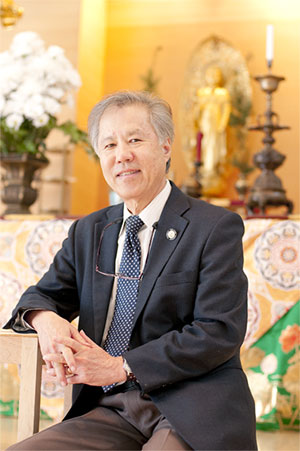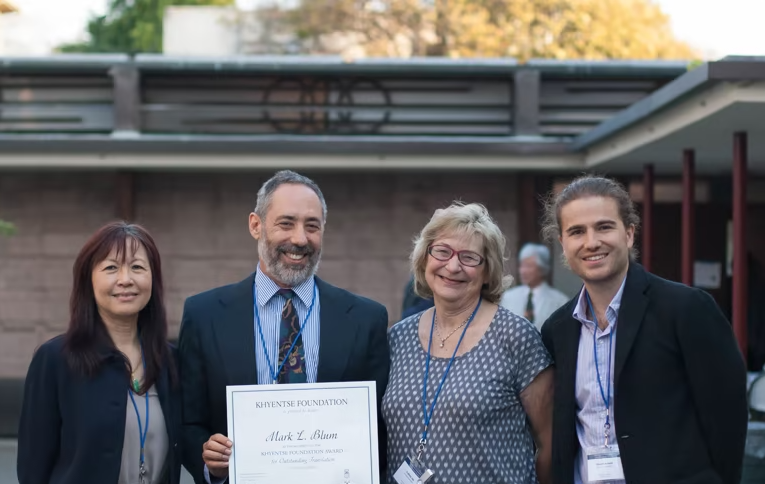A one-day Zoom symposium was held on the 11th, sponsored by the International Association of Shin Buddhist Studies (IASBS) and the Robert H. N. Ho Family Foundation Program in Buddhism and Contemporary Society at the University of British Columbia (UBC) in Vancouver. “The Radical Other Power of Shinran (1173–1263): A Normative or an Outlier Position in Mahayana Buddhism.” At this conference, our four speakers gave in-depth analyses of Other-power (tariki) in the thought of Shinran, and how it has influenced not just Japanese Buddhism, but how we understand the unconditioned irruption of Amitabha Buddha (Amida) into our conditioned world.
This particular symposium went on for half a day and featured four speakers: Prof. Kenneth Tanaka (Professor Emeritus, Musashino University, Tokyo), Prof. David Matsumoto (president of the Institute of Buddhist Studies, Graduate Theological Union), Prof. Mark Blum (Shinjo Ito Distinguished Chair in Japanese Studies at UC Berkeley), and Melissa Curly (Associate Professor, Graduate Studies Chair in the Department of Graduate Studies at the University of Ohio).

Kenneth Tanaka summarized the intellectual trajectory of Other-power thought in Japan. While Honen was the first thinker to argue for exclusive practice through nembutsu, his disciple, Shinran, went further. He prioritized shinjin (the true heart) over nembutsu itself, disregarding the notion of efficacy (which Honen emphasized). He also argued that shinjin was bestowed by an act of grace from Amida (Amitabha), whereas for Honen, nembutsu was critical in nurturing it. Finally, while not a philosophical point, Shinran was a married man who had children, while Honen remained a celibate monk throughout his life. For Shinran, status of any kind did not matter; shinjin was all that mattered.

David Matsumoto, president of the IASBS, gave a “non-binary perspective on Self-power and Other-power,” challenging the traditional opposition between the two. He made the case that rather than simply binary opposites, Other-power is inclusive of Self-power, the opposite of calculation and therefore enveloping it. As an act of the Buddha, Other-power also means “becoming absolutely Other,” not simply “us” (sentient beings) becoming the Buddha, but the Buddha becoming identical with the Other that is ourselves. Shinjin connects the oneness of mind shared by the Dharmakaya and the minds of foolish beings; all dichotomies are in the process of becoming one. The gift of shinjin from Amida therefore demolishes Otherness. From the Shin Buddhist perspective, it would seem that shinjin was the way to actualization of emptiness or sunyata, in other words, the Buddhist goal of ultimate non-conceptuality. Other-power is therefore, by definition, not the dualistic opposite of Self-power, but encompasses it. We must open ourselves to becoming emptied of all conceptualizations and prideful or lazy distinctions – in other words, calculations.

Mark Blum also provided a deeper analysis of Other-power, outlining a theory of tariki that began with Honen and his elder disciples, otherwise known as Shinran’s senpai (Shoku, Ryukan, Shoko, and Seikaku). He offered three historical phases in which this process occurred, culminating in the transition from medieval Japan to the early modern period of the Tokugawa era, in writers like Jinrei (1749–1817) and Ryosho (1788–1842). Prof. Blum argued that there is a steady transition, all the way until the early modern period, from Honen’s stress on orthopraxy (tariki nenbutsu) to intellectualized discourse on orthodoxy – shinjin. Prof. Blum also offered a fascinating discussion about how Amida’s act of the Primal Vow was understood: as an immanent force active in the world. Core to this was the notion of “myth.” Amida’s vows were made – and fulfilled – in a mythic time, not in simply “in a time and place” of “when” and “where” that we can refer to in our conditioned historic past, but in a narrative expression of reality that reaches into our samsaric present. It is not historical narrative. It does not reflect documented experience, but resonates over human time and cultures (these ideas were explored in the panel discussion later on).

I found Melissa Curly’s lecture among the most eye-opening. I had never heard of her subject, the psychotherapist Morita Shoma (1874–1938), who specialized in anxiety disorder treatment. He saw them as blockages of dynamic movement in the mind, causing one to be trapped by delusive thoughts. He did say that there were parallels with his practice and Zen meditation. But Prof. Curly noted that his language of calculation seems to invoke more Shinran than Zen, as he seemed to invoke spontaneous activity in opposition to calculation. She explored what Morita’s reading might illuminate in Shinran, and through a very engaging exploration of Morita’s psychotherapeutic thought (shinkeishitu, tendo moso, and keroketsu), she outlined how hakarai, or calculation, was seen as leading to blockages that needed to be broken through so that his patients could “renew natural tendencies toward spontaneous activity, realize experientially the state of obedience to nature, and rediscover one’s intrinsic desire for life: honrai no sei yokubo.”
Naturalness, as a concept, implies to be something enabled from the very beginning, much like how a baby does not need to learn to cry, and is born doing so. The Chinese word for naturalness, ziran (“in accord with one’s nature”) is not distinct from the social and political. Plants and animals act naturally, but so can human beings and even societies and institutions. Therefore, jinen, the Japanese counterpart to ziran, is associated with Buddhist ideas of reality itself, and therefore Buddha-nature, emptiness, enlightenment, and so on.
The unforced self-expression of the Dharmakaya is Amida’s self-expressive activity, through which the Pure Land and all its residents is manifested. The ultimate reality of Buddha-nature is constantly engaged in activity through the Primal Vow. Prof. Curly suggests that Morita might have gone so far as to swap Amida for the “self-expressive activity of life.” What might radical Other-power imply if we swapped Amida back in? How can we relate to an internal power that causes oneself to be alive, and through gaining access to that power, restore ourselves to a state of good psychological health, the goal of Morita and all psychotherapists? How can our calculation and artifice, which manifests in what Maurice Merleau-Ponty called the “artificial productivity” of humanity, be supplanted by life’s natural and self-expressive activity – the Dao, as the Daoists would call it?


